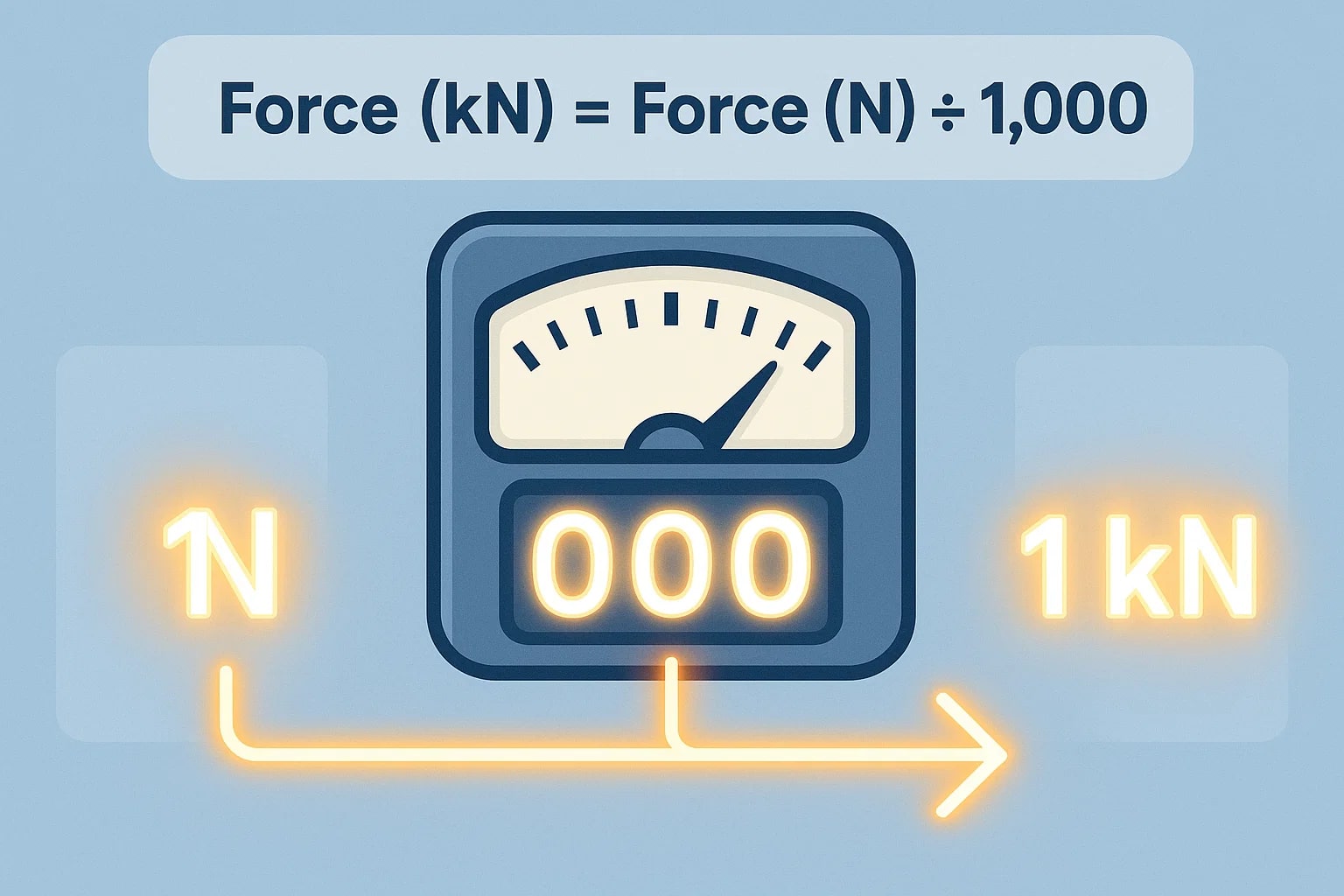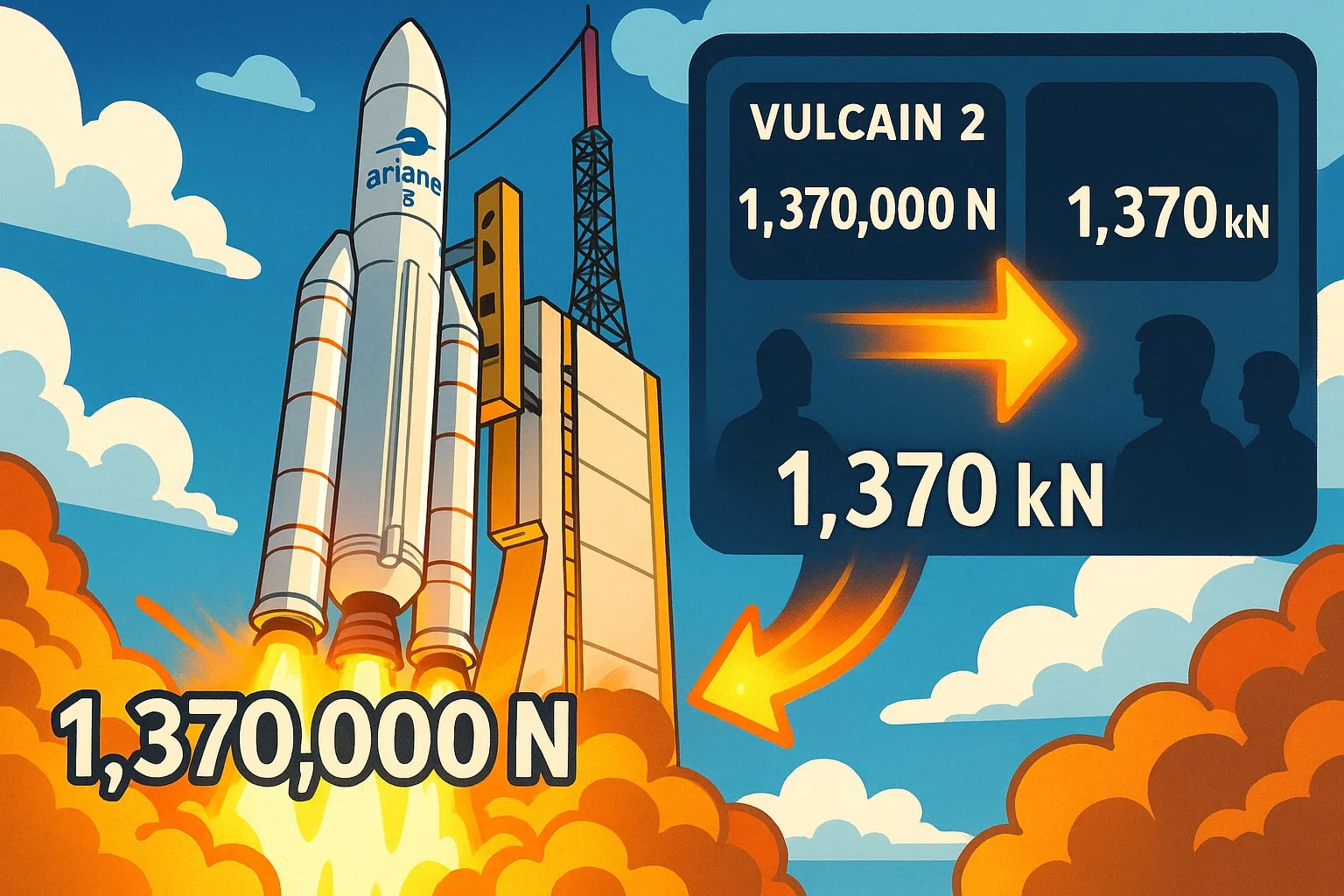newton to kilonewton – How to convert N to kN
Converting newton to kilonewton is a standard step in engineering and physics when scaling between smaller forces and large structural loads. This guide covers both units, the exact formula for conversion, and a real-world example where this shift in units made data easier to work with.

What is a newton (N)?
The newton is the SI unit of force, defined as the amount of force required to accelerate a 1-kilogram mass by 1 meter per second squared.
1 N = 1 kg·m/s²
It is used in almost every branch of science and engineering. Whether measuring the pull of gravity on an apple, the thrust from a spacecraft’s maneuver, or the force on a bolt in a machine, newtons are the universal reference for force in the metric system.
What is a kilonewton (kN)?
The kilonewton is a larger unit of force in the SI system, equal to 1,000 newtons.
1 kN = 1000 N
Kilonewtons are widely used when forces are large enough that using newtons would require impractically large numbers. In construction, automotive crash testing, aerospace load analysis, and rope safety ratings, forces are often expressed in kilonewtons for convenience and clarity.
Formula for converting N to kN
The conversion between newton and kilonewton is simple:
Force (kN) = Force (N) ÷ 1000
Example:
If you have 12,500 N:
12,500 ÷ 1000 = 12.5 kN
To avoid calculation mistakes, you can use the Force Converter on Jetcalculator. For other engineering-related measurements, such as How to convert meter to centimeter, check the Conversion Tools section.
Do you know?
-
Newton: The average human bite force is about 700 N — enough to crack a walnut but far from the power of large predators.
-
Kilonewton: Many climbing ropes are rated to withstand 8–10 kN of force, meaning they can hold roughly the equivalent of a small car’s weight in a fall.
-
Newton: The thrust from a hair dryer’s airflow can be around 1–2 N — tiny compared to mechanical forces in engineering projects.
-
Kilonewton: The towing capacity of some heavy-duty trucks is expressed in kilonewtons to describe the maximum pull force on a trailer hitch.
When a rocket’s lift-off went from N to kN
In 2018, engineers at the European Space Agency prepared the Ariane 5 rocket for a satellite launch. During pre-launch analysis, all thrust data was initially recorded in newtons — for example, the main stage’s Vulcain 2 engine produces about 1,370,000 N of thrust.
However, for mission planning documents, these figures were converted into kilonewtons to simplify communication. That same 1,370,000 N became 1,370 kN, which is much easier to read and compare against other engines’ performance.
The conversion might seem minor, but when dealing with dozens of subsystems, each with its own thrust or load values, using kilonewtons keeps numbers manageable and reduces errors from misreading zeroes. The clear presentation helped mission control track engine performance in real time during lift-off, contributing to a smooth and successful launch.

Simplifying force measurements
The formula 1 kN = 1000 N is straightforward, yet it bridges two ends of the engineering scale — from delicate measurements in laboratories to massive forces in aerospace and construction.
Newtons give accuracy when working with smaller forces, while kilonewtons make sense when dealing with forces large enough to overwhelm the readability of newtons. Both are part of the same system, making conversions quick and reliable.
With Jetcalculator’s tools, you can switch between N and kN instantly, whether you’re designing machinery, testing materials, or interpreting safety specifications. Sometimes, better decisions start with simply changing how the numbers are written — from thousands of newtons to just a few kilonewtons.

